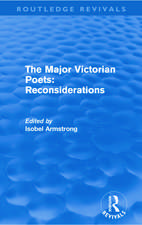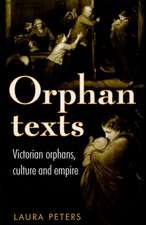Hans Christian Andersen and Music: The Nightingale Revealed
Autor Anna Harwell Celenzaen Limba Engleză Paperback – 16 mai 2017
Preț: 299.52 lei
Preț vechi: 364.17 lei
-18% Nou
Puncte Express: 449
Preț estimativ în valută:
57.33€ • 62.30$ • 48.19£
57.33€ • 62.30$ • 48.19£
Carte tipărită la comandă
Livrare economică 21 aprilie-05 mai
Preluare comenzi: 021 569.72.76
Specificații
ISBN-13: 9781138274259
ISBN-10: 1138274259
Pagini: 282
Dimensiuni: 156 x 234 mm
Greutate: 0.45 kg
Ediția:1
Editura: Taylor & Francis
Colecția Routledge
Locul publicării:Oxford, United Kingdom
ISBN-10: 1138274259
Pagini: 282
Dimensiuni: 156 x 234 mm
Greutate: 0.45 kg
Ediția:1
Editura: Taylor & Francis
Colecția Routledge
Locul publicării:Oxford, United Kingdom
Cuprins
Contents: Introduction; The nightingale: Interlude 1: an excerpt from Shadow Pictures from a Trip in the Harz Mountains, Switzerland etc. etc. in the Summer of 1831 by H.C. Andersen; The improviser: Interlude 2: Wandering through the Opera Gallery by H.C. Andersen; The virtuoso: Interlude 3: 'Liszt' from A Poet's Bazaar by H.C. Andersen; The poet, the pianist, and the patron: Interlude 4: The Pepperman's Nightcap by H.C. Andersen; The patriot: Interlude 5: Bulwark of the Arts by H.C. Andersen; The tone-poet; Coda: the death of a romantic; Notes; Bibliography; Index.
Notă biografică
Anna Harwell Celenza, Caestecker Professor of Music, Georgetown University, USA
Recenzii
'...[the book's] deeper insights are fascinating. Anna Harwell Celenza paints a scholarly yet vivid picture of this gangling, grotesque, poetically ardent figure, obsessed with the arts since his wretched childhood and struggling unsuccessfully to become singer, actor and even, hopelessly dancer, before discovering his poetic genius... The attraction of this book [...] is not only Andersen himself, but the window his life opens into his incredibly rich era. When Andersen told him about Scandinavian musical life, Wagner responded 'It's as if you have related an entire fairytale from the world of music!' That should be said here too.' BBC Music 'This is a tautly written, readable and fascinating volume, casting new light on familiar figures from start to finish.' Classical Music '... the strength of Celenza's book lies in the way it places Andersen's work in a broader European context... [it] reveals that his work has much to tell us about music and Romantic subjectivity.' Music and Letters
Descriere
With the bicentennial of Hans Christian Andersen's birth in 2005, there is still much about the writer that is not yet common knowledge. This book explores a single aspect of that void - his interest in and relationship to the musical culture of nineteenth-century Europe. Why look to Andersen as a barometer of musical taste? He enjoyed a brief career as an opera singer and dancer at the Royal Theater in Copenhagen and in later years went on to produce opera libretti for the Danish and German stage. Andersen also made thirty European tours during his seventy years, and on each of these trips he regularly attended opera and concert performances, recording his impressions in a series of travel diaries. In short, Andersen was a well-informed listener and, as this book reveals, his reflections on the music of his age serve as valuable sources for the study of music reception in the nineteenth century.



















